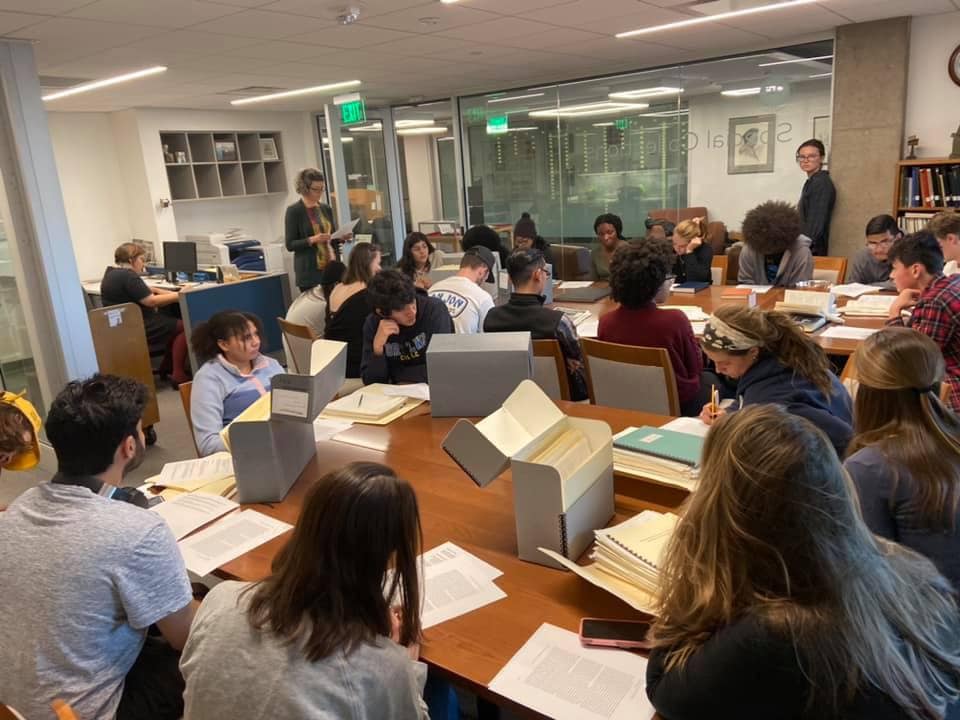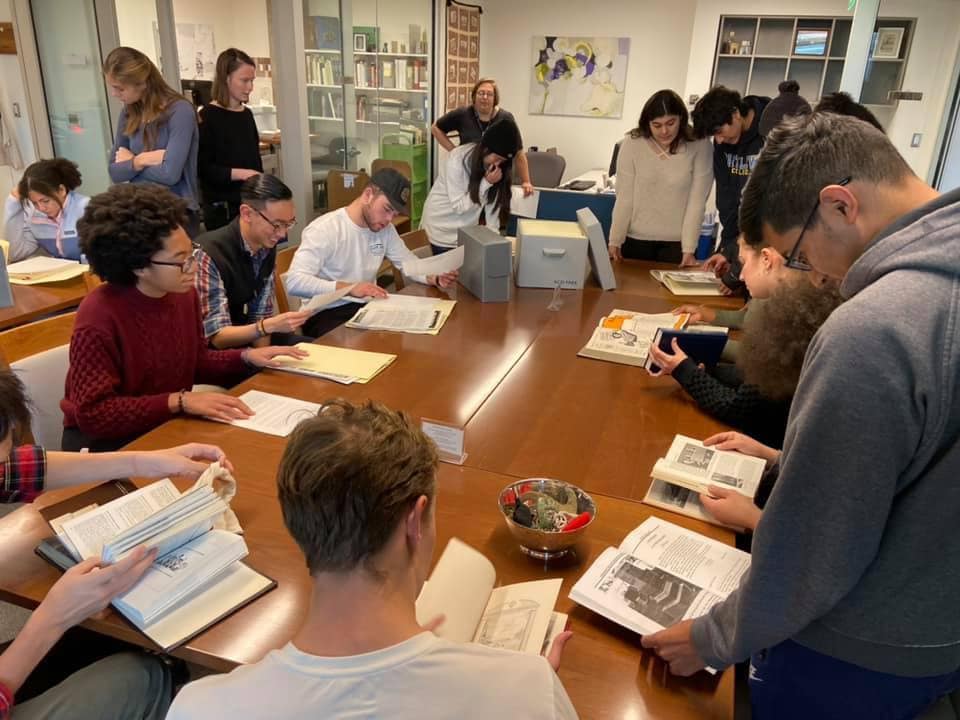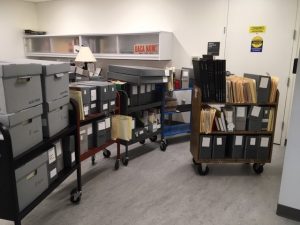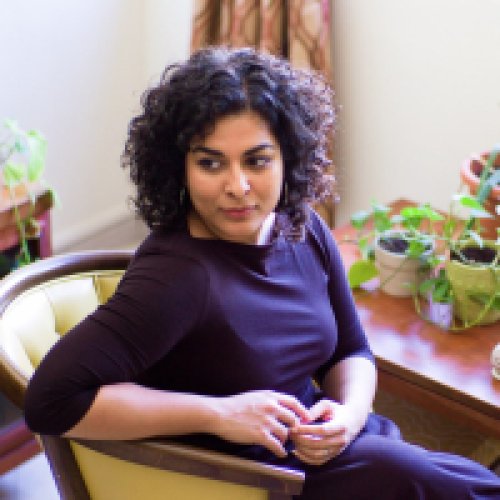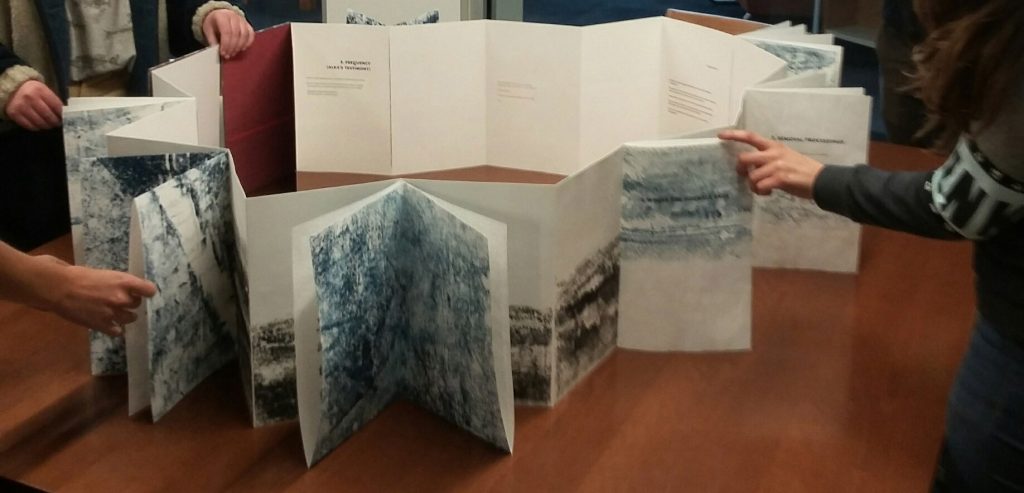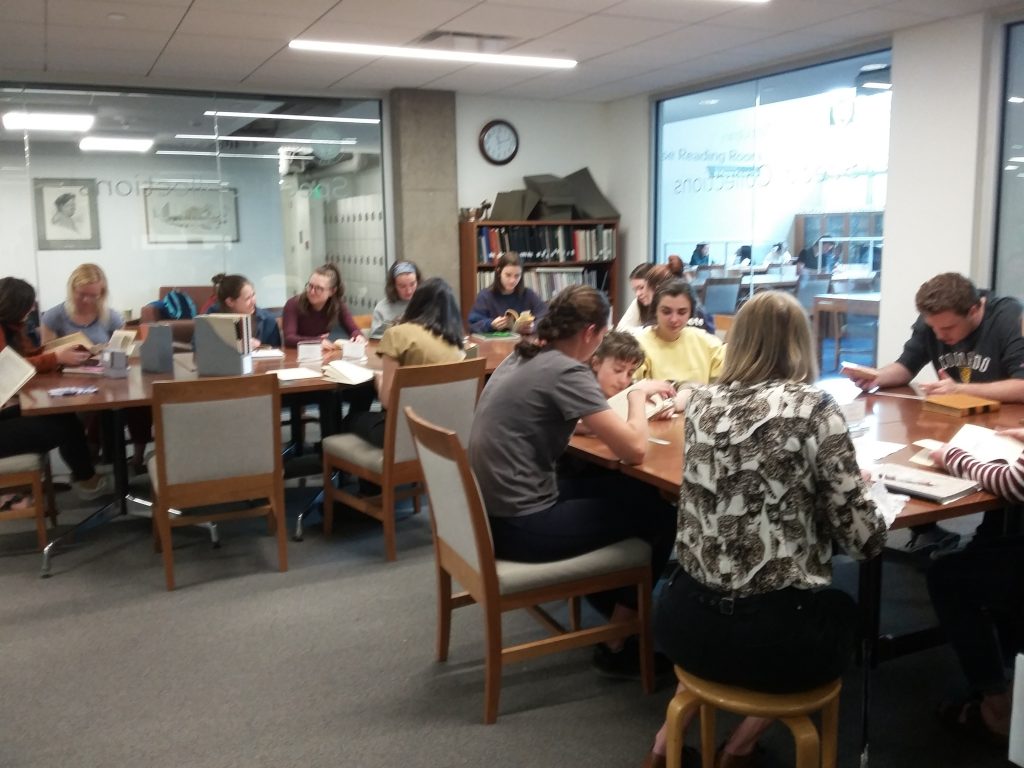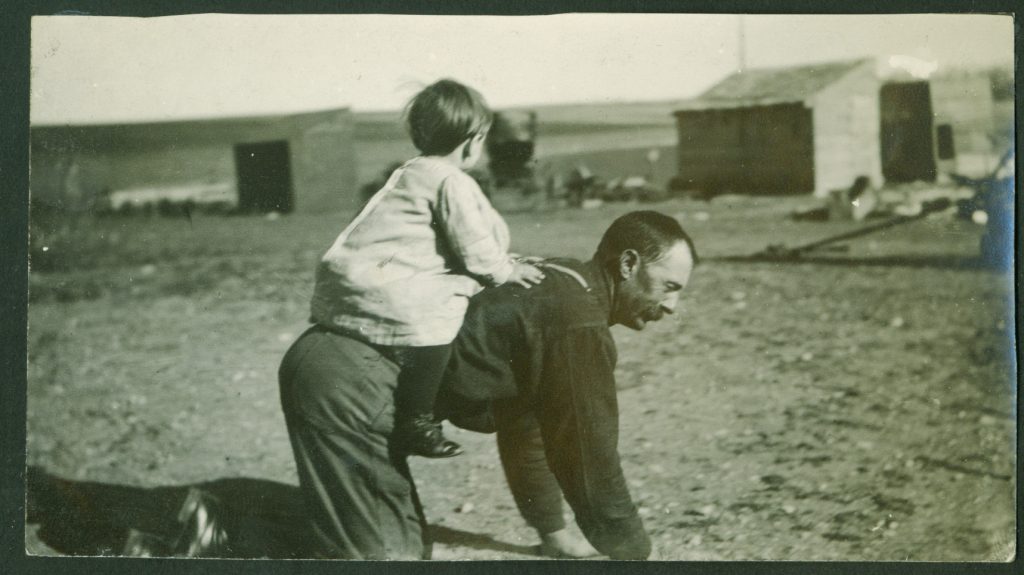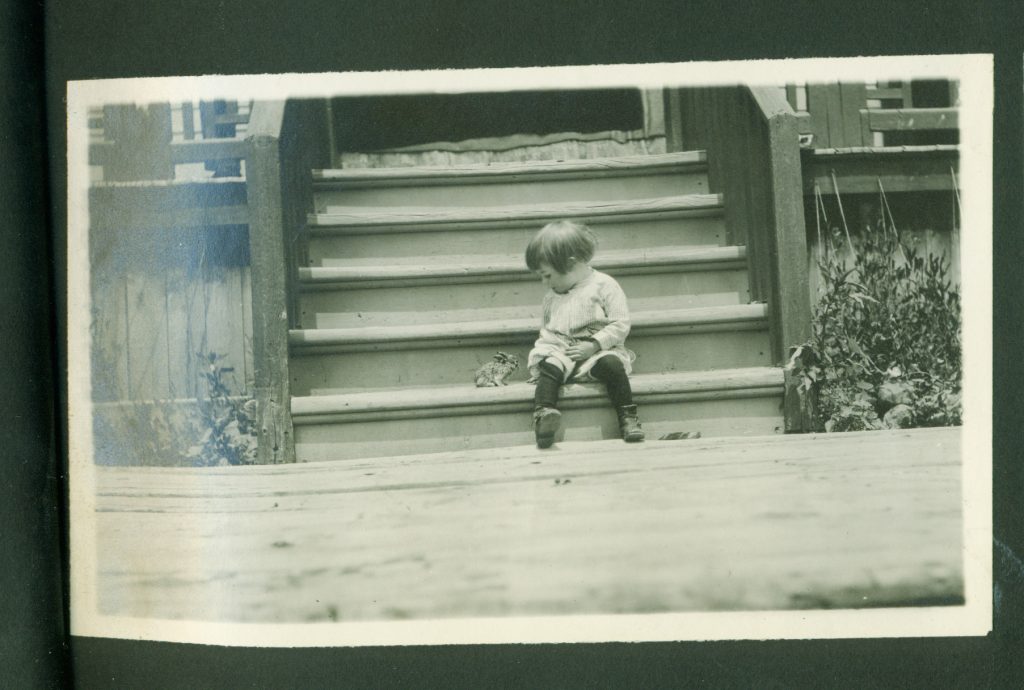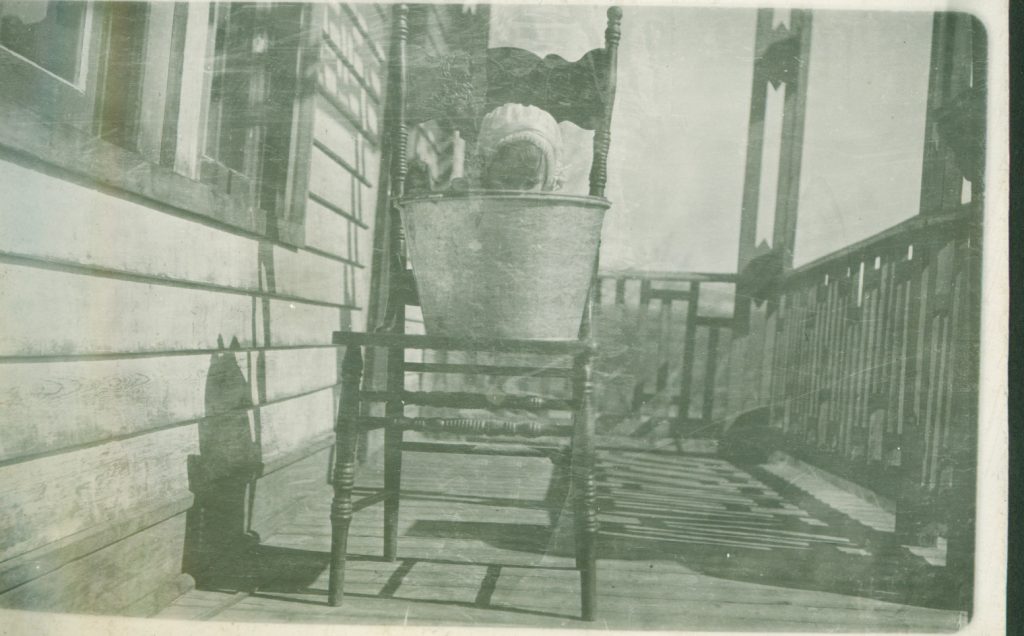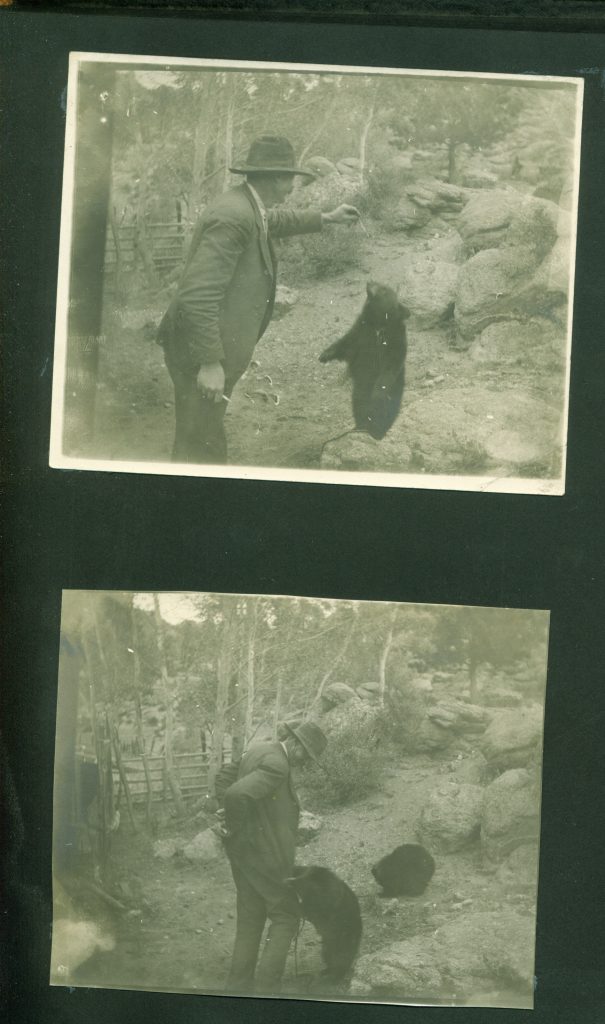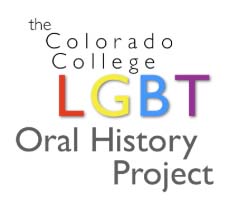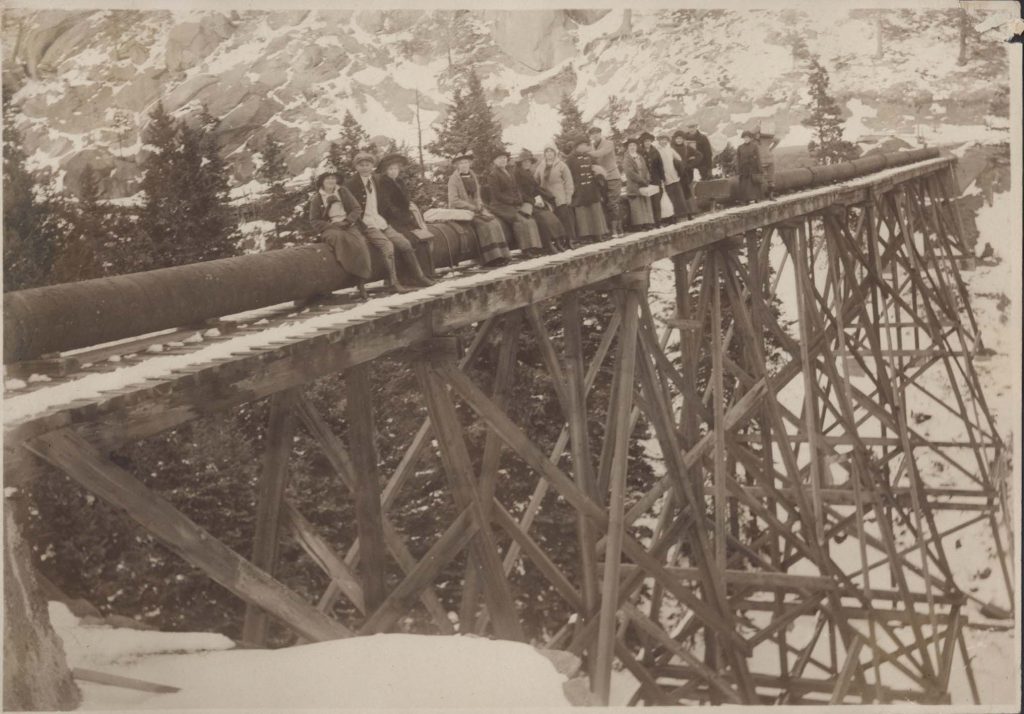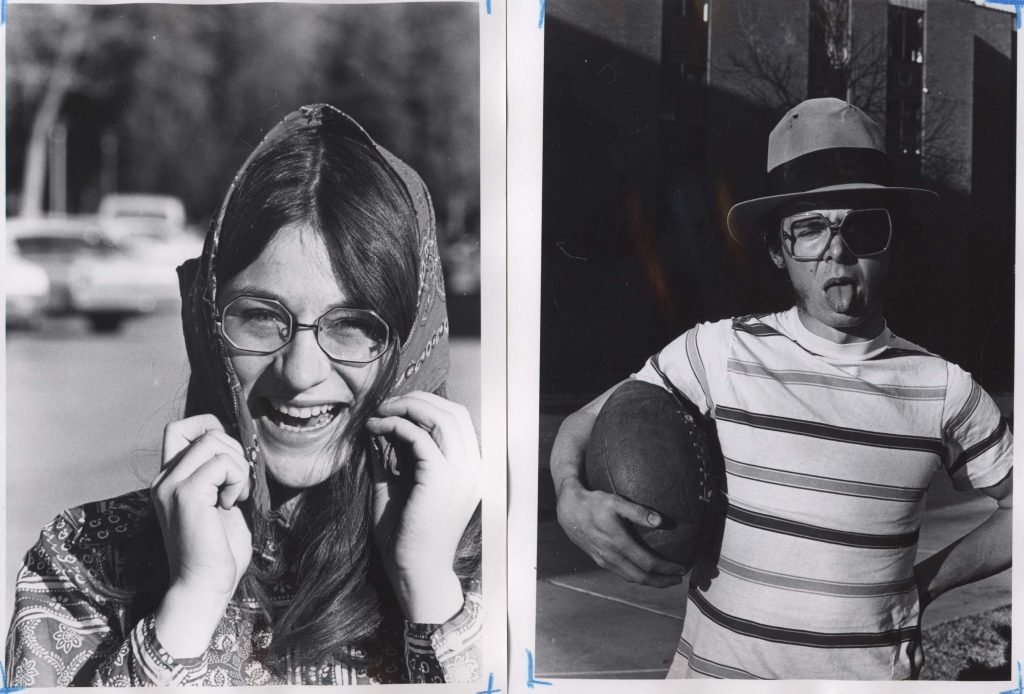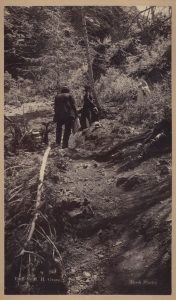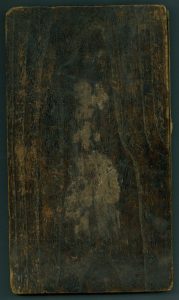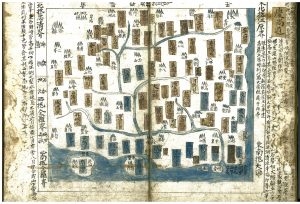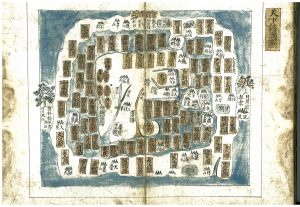Starting in 2015, Jamal Ratchford (“Dr. J.” to his students) has invited-slash-required his classes to visit the Archives to research race and racism at Colorado College. It’s always exciting to have a room full of students working on related topics, and I particularly enjoy witnessing the way the students in these classes help each other find resources and talk about them. In Block 3 of this school year, November 2019, 23 students in “Introduction to the Comparative Study of Race and Ethnicity” were in and out of our reading room almost every day, and at the end of the block we had a TON of reshelving to do, so much that I snapped a photo:
Of course, what I really SHOULD have done is capture a photo of the STUDENTS, but my staff and I were so busy helping them that I never thought to do it!
Addendum: Dr. J provided two photos:
